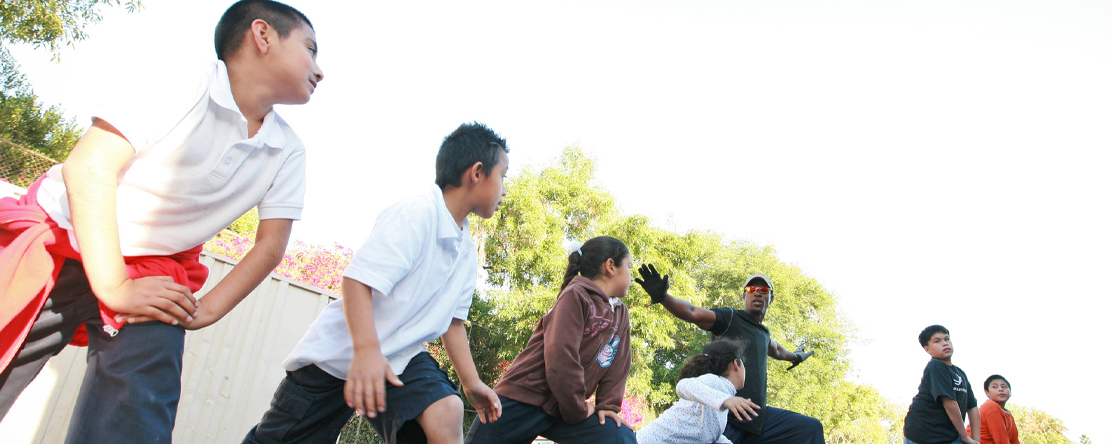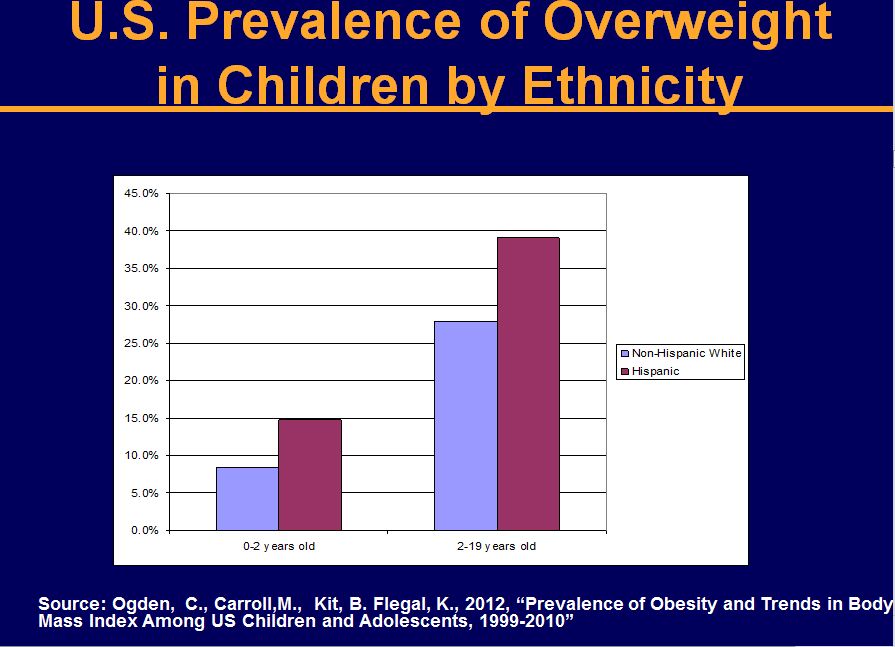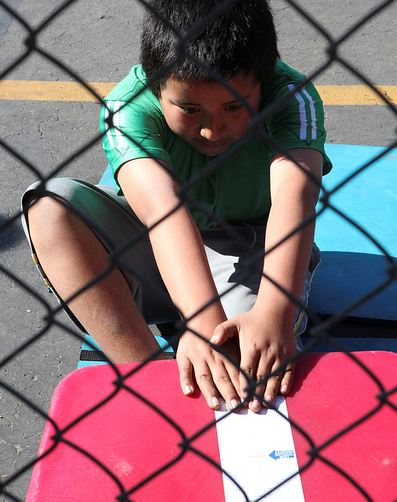
Update
Promising Strategies for Reducing Obesity in the Latino Community
-
Focus Areas
Chronic Disease Prevention, Healthy Communities, Women, Youth & Children -
Issues
Nutrition & Food Security, Physical Activity -
Programs
Dialogue4Health

Overweight and obesity rates are high in the Latino community–but strikingly so for Latino children from infancy through adolescence, putting them at increased risk in adulthood for chronic diseases and premature death as well as emotional challenges like low self-esteem, depression and bullying, a UCLA professor told a Public Health Institute (PHI) national web forum of more than 540 participants.
That is why it is critical for the Latino community to come together to address the underlying social, economic and environmental inequities that contribute to high obesity rates and threaten the health and future of the next generation of Latinos, speakers at the forum said.
And, the forum speakers said, a number of Latino communities are doing just that, leading the way in demonstrating how to improve conditions for health and prevent obesity – including one whose efforts saw students’ body mass index drop 8.79 percent in a Southern California school district.
Community engagement in prevention is essential because obesity “robs Latinos of health, productivity and lives,” said forum moderator George Flores, MD, MPH, program manager for community health for The California Endowment.
The web forum, “Why Obesity Is Important to the Latino Community,” was the first of its kind to simulcast programming on the web in Spanish and English to inform Spanish-speaking audiences about an important health matter. The first in a two-part series, the forum follows on PHI webinars last year that were tied to the nationally televised “Weight of the Nation” documentary about the U.S. obesity crisis.
Overweight Starts Early
Michael A. Rodriguez, MD, MPH, a professor at UCLA’s David Geffen School of Medicine, presented a grim picture: Overweight is more common for Latino children from birth to age two than for non-Hispanic white children, he said (see chart, above at right, comparing the two population groups).
What’s more, obesity has been higher among Latinos boys aged 12 to 19 than other population groups for more than two decades, he said. From 2003 to 2006, for instance, 22.1 percent of Mexican American adolescents were obese while 17.3 percent of non-Hispanic white and 18.5 percent of non-Hispanic black teenagers were obese, he said, citing data from the National Health and Nutrition Examination Surveys (NHANES). In contrast, 14.1 percent of Mexican American adolescent boys were obese in the years 1988 to 1994.
The reason for concern is plain: Overweight and obese children are more likely to grow up to be overweight and obese adults, with serious health problems like diabetes and its many complications, heart disease, certain cancers and a shortened lifespan, he said. Obese children often suffer from low self-esteem, negative body image and depression as well as social discrimination in the form of being stigmatized or subject to bullying and negative stereotyping.
Why Latinos Are at Higher Risk
Latino communities are hard hit by conditions that contribute to obesity, the forum’s speakers said. Income, education, unemployment, housing conditions and neighborhood environment profoundly affect whether individuals will consume nutritious food and have options for physical activity where they live. Too many of these communities lack safe places for physical activity or full-service grocery stores; instead, hungry kids shop in convenience stores or liquor stores and find chips, chips and more chips tempting them at the counter.
“It is unreasonable to expect that people will change their behavior easily when so many forces in the social, cultural and physical environment conspire against such change,” Rodriguez said.
Effective Solutions Led by Empowered Community Members
But exciting efforts by a number of Latino communities are showing how communities can make themselves healthier places by advocating for effective policies related to nutrition and physical activity, systems change and neighborhood change, said Flores.
Speakers from the California Center for Public Health Advocacy (CCPHA) and PHI’s Central California Regional Obesity Prevention Program (CCROPP) spoke of their successful efforts to engage and empower local residents to identify their community health concerns, learn leadership skills and pursue changes in their environments like increased nutrition education and physical activity in schools and safe streets initiatives to prevent and reduce obesity.
In Baldwin Park, for instance, People on the Move (POTM), a Healthy Eating, Active Communities program led by CCPHA, worked with the local school district to make physical education and physical activity a higher priority. The upshot? Four years later, the BMI for 5th, 7th and 9th graders dropped by 8.79 percent in Baldwin Park, a town east of downtown Los Angeles.
POTM also met with local stores to move soda, candy, chips and beer away from the front of the stores, increase availability of fruits and vegetables and place their “Healthy Selection” logo on healthy foods to draw attention to them. The group developed a “complete streets policy” to encourage the design of roads to be compatible with bicycling, walking, and using public transit, not just driving vehicles. The most comprehensive policy of its type when adopted, it received national recognition.
Central Valley residents trained by CCROPP have led to more locally grown produce appearing in stores, schools removing unhealthy food, walk to schools days and much more. ‘The real success is the story behind the stories,” said Genoveva Islas-Hooker, MPH, CCROPP regional director in Fresno. “We have been working … at building the leadership capacity of residents who are very marginalized and exploited and helping them to elevate their voices,” she said. The residents are role modeling “how to stand up and make change in your community.”
Latino Community Wants to Be Part of Solution
A recent poll commissioned by The California Endowment backs up what CCROPP and CCPHA are finding – that Latinos overwhelming support (83% of those polled) the idea that their own community should participate in efforts to prevent obesity, Flores said. Sixty-three percent of Latinos polled said more attention should be paid to obesity in their community, and 74 percent felt the neighborhood a child lives in “matters a lot” to whether the child will be healthy and able to be physically active and eat nutritious food, he said.
“It takes a community to raise children so they’re are not surrounded by risks to their health, risks to their safety, and risks from inducements to eat unhealthy food,” Flores said. As the survey shows, Latinos recognize that “the community as a whole needs to be stewards, needs to be caretakers for each other and make sure they have healthy places to raise children.”
——
See upcoming web forums on PHI’s Dialogue4Health.
Photo by Tim Wagner for Partnership for the Public’s Health.
More Updates


Physician’s Weekly: Study Using Data from PHI’s California Cancer Registry Explores How Ethnicity Impacts Mortality in Early-Onset Colorectal Cancer

How PHI’s California Overdose Prevention Network is Helping to Prevent Opioid Overdoses in San Benito, CA

Psychiatric News: How PHI’s CA Bridge is Fighting the Opioid Crisis in the ED
Work With Us
You change the world. We do the rest. Explore fiscal sponsorship at PHI.
Support Us
Together, we can accelerate our response to public health’s most critical issues.
Find Employment
Begin your career at the Public Health Institute.


